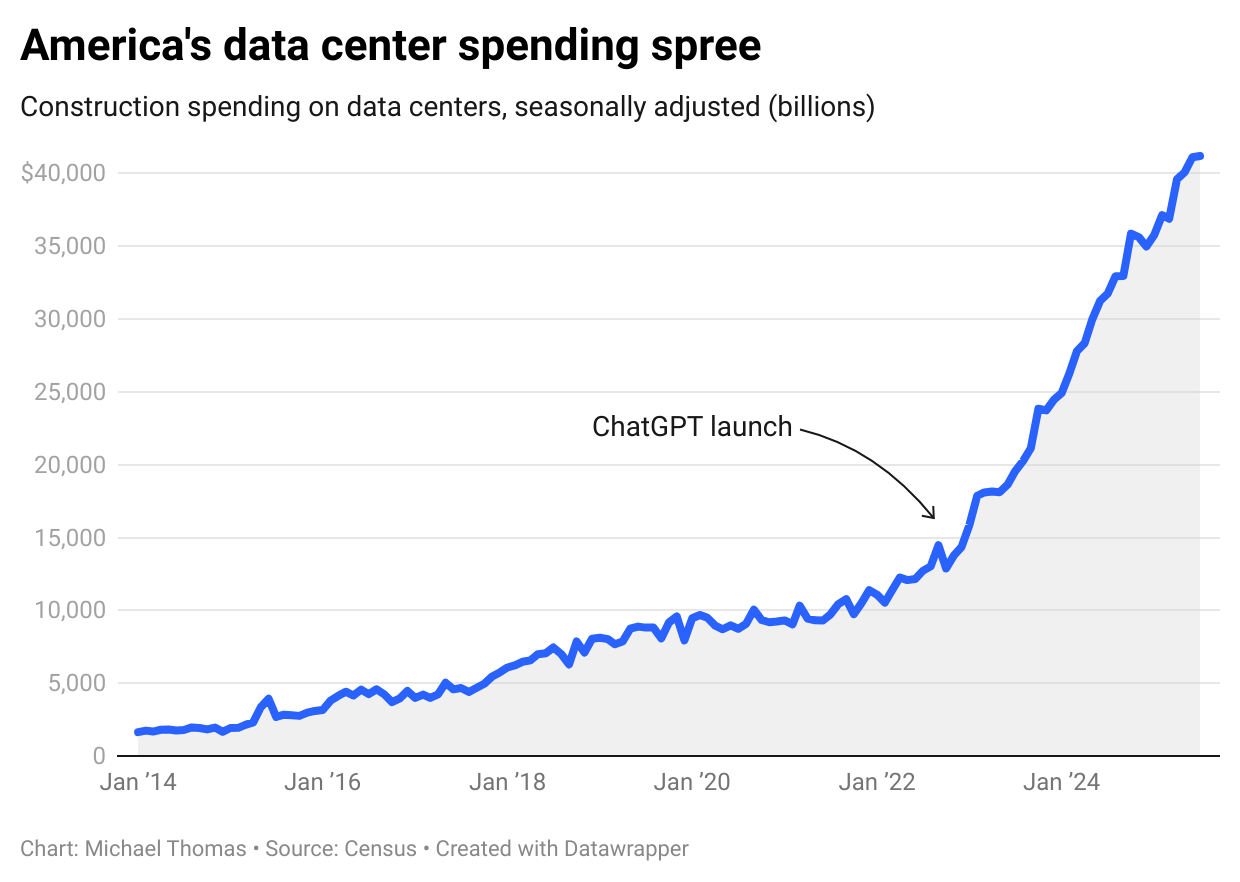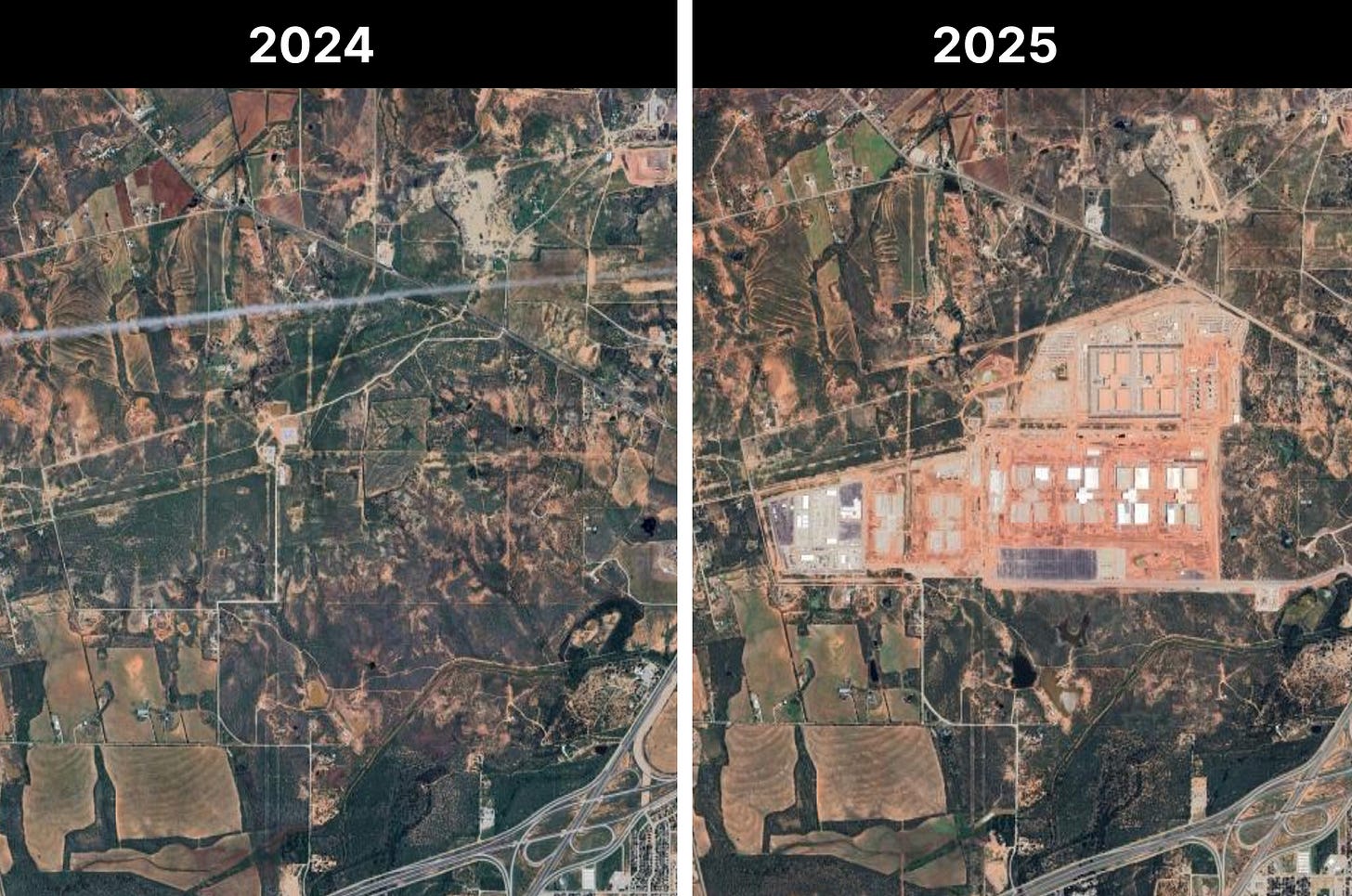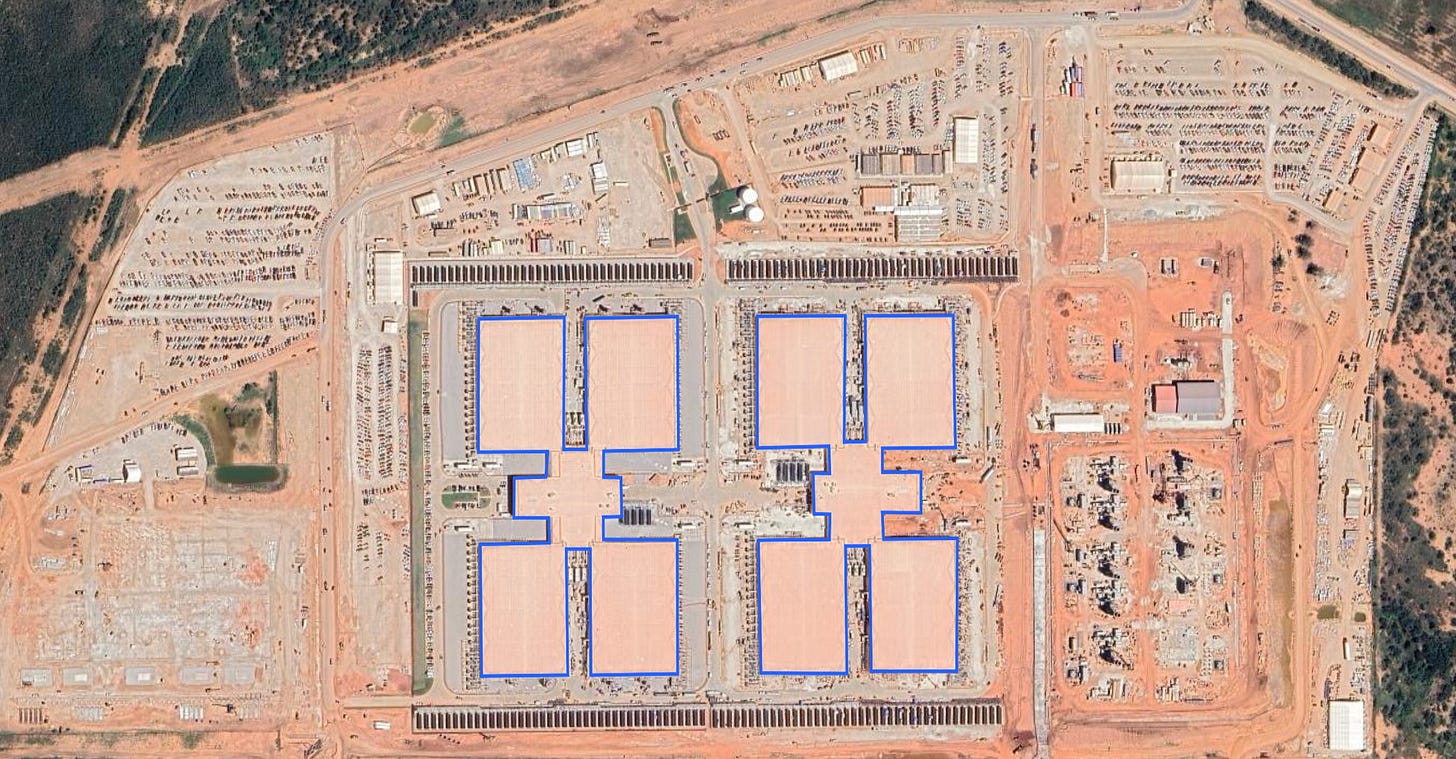These Data Centers Are Getting Really, Really Big
Gigawatt-sized data centers are becoming the new normal
A quick note: At my company, Cleanview, we recently built a data center tracker. I’ve been following the development of AI and data centers closely for much of the last few years. And even I’ve been shocked by what I’ve learned in building this product. Today I’m publishing the first story that uses our data center tracker. If you want to use the platform, you can sign up for Cleanview here.
There’s been a lot written about AI investment and its impacts in the last year. But somehow, I think most people still underestimate the scale of the current data center build-out that’s happening across the United States.
Since the launch of ChatGPT in November 2022, tech companies have spent huge sums of money building data centers. In just three years, spending on data centers in the US has gone from $13.8 billion to $41.2 billion per year—an increase of 200%. This has come at a time when virtually all other construction activity in the country has slowed.
I’ve been skeptical of the AI power demand story at times. But in the years since I first started writing about it, many AI infrastructure projects have gone from the realm of press releases to actual operating projects. And they’ve done it at breakneck speed.
OpenAI’s Stargate data center in Abilene, Texas is one such project. Just over a year ago, the project’s developer had nothing more than some permits and a few hundred acres of dirt in West Texas. Today there are 100,000 of NVIDIA’s most advanced chips consuming 200 MW of power in the project’s first two buildings.
Over the next year, the developer plans to build another 6 buildings, bringing the site’s total power consumption to 1.2 GW.
It’s hard to really put the scale of this project in perspective. One way to do it is to look at the project from space. The satellite image below shows Stargate’s first two buildings. Each of those tiny little dots in the top left and top right are construction workers’ cars. There are about 6,000 of them shuttling workers to the site each day.
Another way to understand the scale of the project is to compare the 1.2 GW of peak demand the facility will use to that of one of the nearest utilities. El Paso Electric, a utility that serves 465,000 customers west of the project, has a peak system load of 2.4 GW.
Stargate isn’t the only gigawatt-scale project progressing quickly in the US either.
Keep reading with a 7-day free trial
Subscribe to Distilled to keep reading this post and get 7 days of free access to the full post archives.




